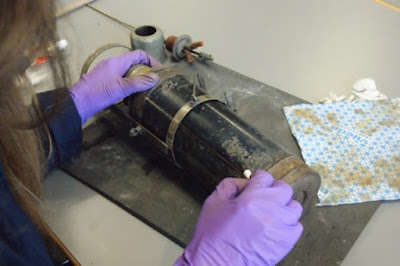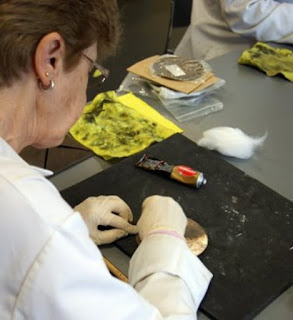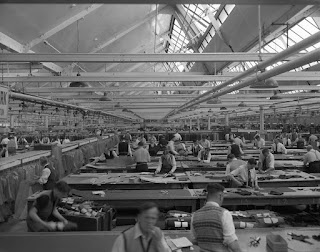As we mark the centenary of the Battle of the Somme, Emma our Conservator reveals the medal awarded to veterans of the battle.
 |
| One side of the Somme Medal - showing the symbolism |
The Recipient
It was issued to Lance Corporal Thomas Hinsley Place from Leeds, who would have had to apply to the French Creux de la Somme Veterans Association to receive it.
We have items from Thomas and his brother Alfred in our collections, including medals and ephemera. Thomas was in the Leeds Pals Regiment, 15th Battalion West Yorkshire Regiment, whilst his brother Alfred was a Petty Officer in the Royal Navy.
How did Veterans Receive the Somme Medal?
Only those who were able to prove that they had been physically present and had participated in any of the battles that occurred in the Somme region from 1914 to 1918 were allowed into the association. Membership was extended to those who had opposed the German invasion of the Somme region in 1940. |
| Other side of the Somme Medal - with the plain text |
Symbolism on the Medal
The medal is made from bronze with a silk ribbon. The ribbon is yellow with a central blue stripe. The medal has the bronze assay mark of the Paris mint on the edge and the signature of M Delannoy.One side has two soldiers from antiquity facing right with their cloaks flowing behind them and a shield in one hand and a javelin in the other. There is a French cockerel behind the British lion in the foreground. At the top there is a figure lying down with a water jar above them, this is symbolising the River Somme. The translation of the inscription reads ‘Battles of the Somme, July-November 1916'.
The other side is very plain with a single inscription translating as ‘Combatants of the Somme 1914-1918-1940’.
Thomas and Alfred Place's War Stories
Thomas Place survived the conflict, however, his brother Alfred did not. Both brothers received commendations, Thomas the Meritorious Service Medal for gallantry and devotion to duty.Alfred received the Albert Medal for saving life with the loss of his own life in 1916.
You can discover more about both of their stories at the In Their Footsteps Exhibition at Leeds City Museum and on the Our First World War Guardians website.
By Emma Bowron, Conservator.




















